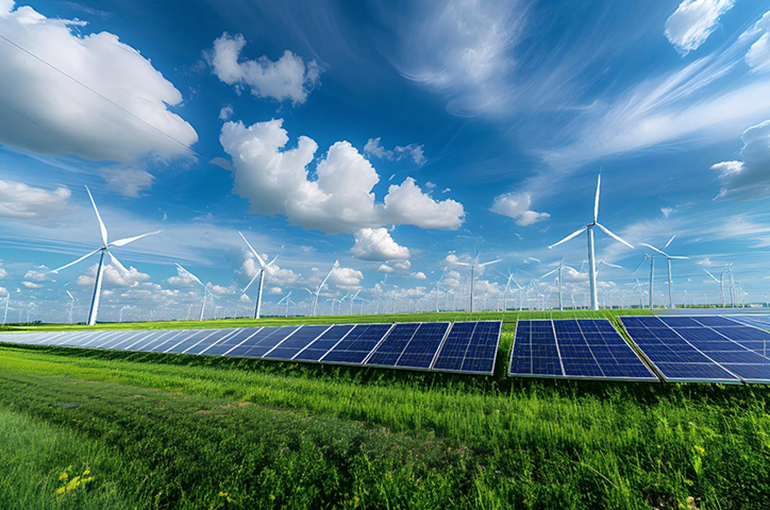 Experts See Renewables Going Fully Market-Based as China Eyes 2030 Carbon Peak Goal
Experts See Renewables Going Fully Market-Based as China Eyes 2030 Carbon Peak Goal(Yicai) June 30 -- With only five years remaining until China’s 2030 carbon peaking deadline, renewable energy sources such as wind and solar are expected to be fully integrated into the market-based electricity system in the upcoming Five-Year Plan, which runs from 2026 to 2030, experts said. They also predict that green energy capacity will soon overtake that of coal and continue to grow rapidly.
The challenge lies in balancing economic growth with energy security, Feng Yongsheng, researcher at the Institute of Industrial Economics of the Chinese Academy of Social Sciences, told Yicai. As more large-scale wind and solar projects come online, the unpredictability of weather and the limits of meteorological forecasting mean China will still need to rely on coal power and energy storage as backup sources of power generation to ensure grid stability.
But this backup system will add to the overall cost of electricity, which will eventually be passed on to the consumers, Feng said. This should be avoided in order to prevent such costs from becoming a drag on economic development.
The key is building a long-term mechanism that supports clean energy, Feng said. The first step is to promote new energy in the electricity market to improve efficiency, and the second step is to encourage the emergence of more new business models and new formats, such as virtual power plants and smart microgrids.
In 2021, the State Council, the country’s cabinet, proposed that non-fossil fuels should account for 20 percent of energy consumption by 2025 and 25 percent by 2030, and that carbon dioxide emissions per unit of gross domestic product should fall by more than 65 percent from 2005 levels. As of last year, non-fossil fuels made up 19.7 percent of China's energy consumption.
Nearly 40 percent of China’s electricity is now generated from non-fossil sources, according to the 2025 government work report. In the first four years of the 14th Five-Year Plan, which runs from 2021 to 2025, energy intensity, which is the amount of energy consumed per unit of gross domestic product, tumbled by 11.6 percent.
The proportion of non-fossil energy consumption needs to increase by 5 percentage points in the next five years, which will not be easy to achieve, said Lin Boqiang, dean of the China Institute for Studies in Energy Policy at Xiamen University. The larger the share of renewables in the power system, the more pressure it puts on the grid, and the harder it becomes to integrate that energy into the grid.
As energy consumption increases, the percentage from renewables will gradually decrease. How coal power is used in new energy peak regulation may need to be reassessed over the next five years, said Lin. More grid-side energy storage is recommended to reduce reliance on coal and improve the efficiency of grid distribution and storage.
More attention should be paid to climate change and extreme weather when building new power systems, said Yuan Jiahai, professor at the School of Economics and Management at North China Electric Power University.
Editor: Kim Taylor